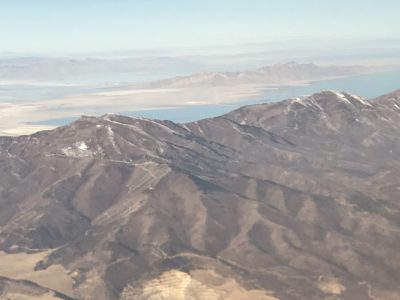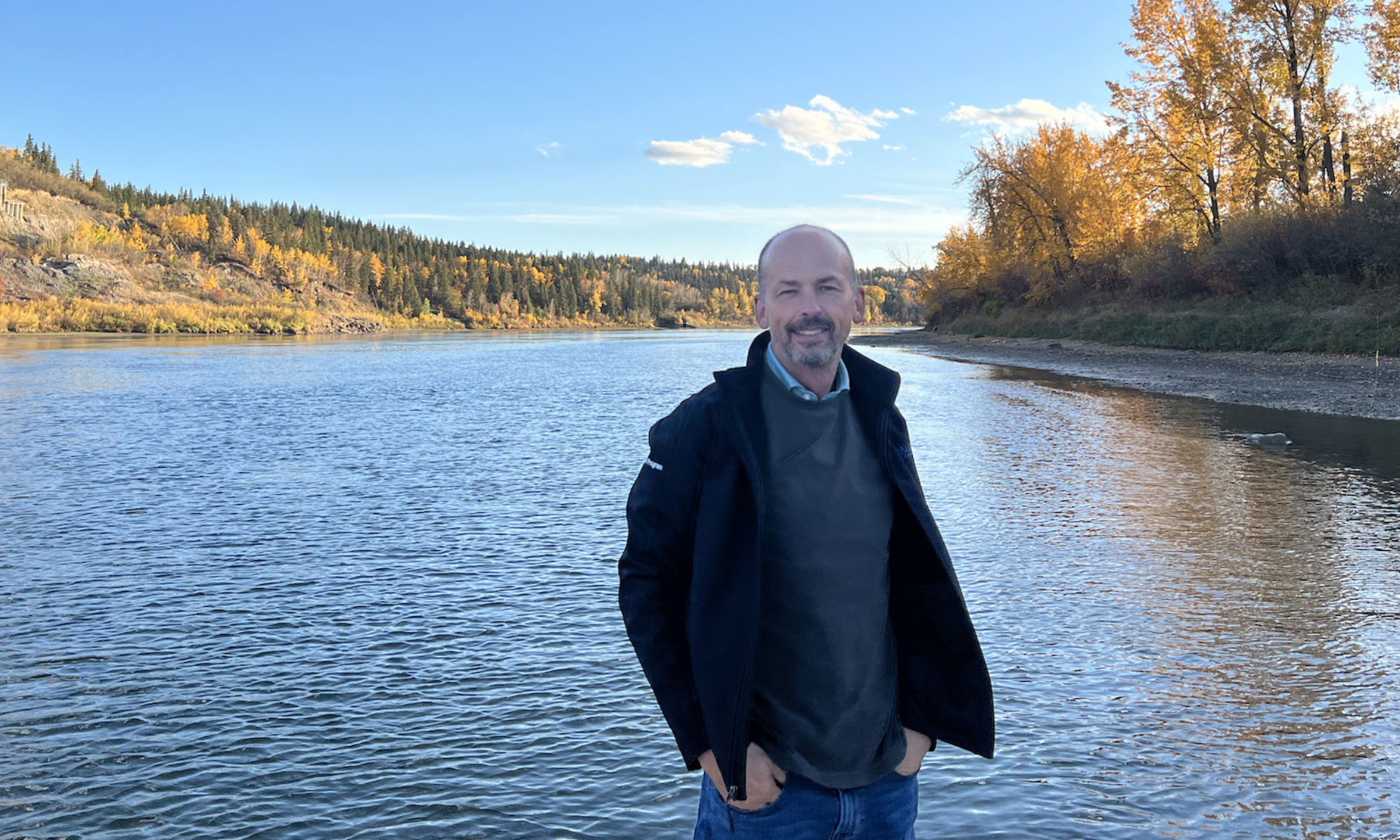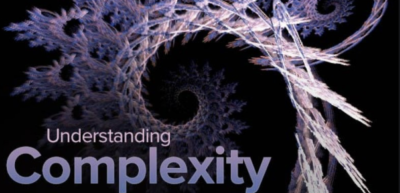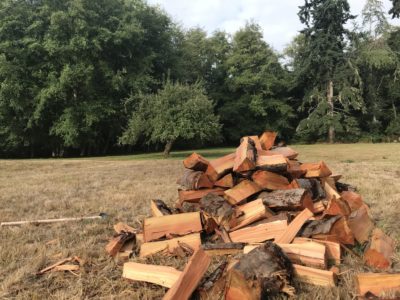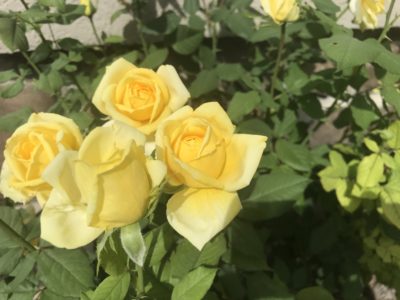
Yellow roses in my back yard this week. Beautiful. Thorny. In bud. In spent life. Clean. Covered with aphids. Simple. Involved. It’s all there. Hold that thought.
Chris Corrigan is the person that I go to when it comes to all things complex facilitation. He’s who I start with when I begin to follow a question. About ten years ago Chris got really deliberate with his learning about complexity — workshops, reading, writing. He’s continued over these ten years. The guy’s got a brain that is phenomenal in his ability to connect, develop, remember, and grow ideas. One of the most unique humans I’ve ever come to know.
Recently, Chris posted a dandy list on his blog about improving awareness and skill when it comes to complex facilitation and frameworks for coming to comprehend more of what is in play with complexity. The beauty of this is that Chris insists on leaning in to more of the complexity, not less. He’s committed, like many of us, to an evolutionary adaptation of capacity, rather than numbing ourselves with oversimplified reductionism more well suited for cheap t-shirts or cheap political maneuvering.
Chris’ list is really good. And I know that when he offers such learning, there is brain, heart, and belly in it. I’ve listed each of his points below. Treat yourself and go read the whole thing on his site.
- Complex facilitation is highly participatory.
- Outcomes are emergent and therefore unknown at the beginning.
- Use stories and base the work in reality.
- Remember that all complexity work is about patterns.
- Work with cognitive stress and overload.
- Not everyone will enjoy it.
- You don’t have a safety net.
Also about ten years ago, for me, it became clear that some of my deliberate learning and practice in the field of facilitation was moving more toward how the inner world connects to the outer world. The human to human side — turns out there is a fair amount going on under the surface. My educational background is psychology and organizational behavior. My life experience has pointed me many times to a deep sense making, trying to understand and feel the nuanced and deeply involved inner world that projects the reality of an outer world. It’s pointed me to a complexity that is personal and interpersonal. My life orientations and practices have lead me to seek the spiritual as much as the spreadsheet, the poetic as much as the production.
So, with some commitment to continue this learning in public, and with “not all figured out” transparency, and with gratitude for Chris’s complexity commitments, below is a bit of Chris’s list applied to inner world awareness.
Complex facilitation is highly participatory. Yes, relationship with self is highly participatory. It requires a continuous process of checking-in with ourselves. We are moved my experience that can render us in very different states in very short periods of time. Asking who am I now, or how am I now, invites a depth of attending to the oodles of ways in which we are not fixed creatures. We are not machines. We are impacted, or can be impacted, by everything from the slight breeze that momentarily animated the trees in the neighboring park to the news flash that signals the rise or fall of the stock market. Knowing self isn’t passive.
Outcomes are emergent and therefore unknown at the beginning. Yah. We humans, individually and collectively, are not a granularly prescribed destiny. Not all that we plan works out. Not all that we hope for works out. Despite rather attractive paradigms and marketing that advocates taking control and removing fear from the human life, spiritual traditions have been teaching us for eons that our lives are a rather constant process of adapting and unfolding. You can see where this gets tricky. But what about intention? But what about plans? But what about goals? What about manifesting? Yes, those things matter. However, the seduction of such is that with a good enough plan, we can remove uncertainty in our lives. Not true. Outcomes, even of self, are emergent.
Use stories and base the work in reality. Indeed. It is massively enjoyable and useful to meet each other in our stories. It’s how we come to know who we are. A person in my life that had a lot of influence on me in my college years in the early 90s used to say, “I don’t know what I think until I write it. I don’t know what I really think until I say it out loud.” For most of us, we are just barely getting into the shallow end of the pool of understanding ourselves. The key is to invoke the story. Even the snippet of story. As an example, this morning I was thinking a bit about efficiency and productivity. I was feeling a little wobbly about a project that I’m working on. I wanted (maybe needed) to find a story within me of how I connect with efficiency and productivity. In the spirit of freedom to follow what arises, I followed the image and then recalled the story of one of my first jobs working part-time in the produce department of a grocery story when I was a kid. I was rather efficient and rather productive trimming that lettuce, and was regarded quite highly for it. That story animates a personal experience that connects me into the reality of today.
Remember that all complexity work is about patterns. And it’s true for human living. Seeing patterns is largely about being willing to look. Being willing to get up on the balcony to get the higher view, even of ourselves, that isn’t possible to see from the trenches. Patterns in human lives that seem so personal, are really universal. Ah, the pattern of abandonment. Ah, the pattern of fear. Ah, the pattern of fanciful hope. Ah, the pattern of protection. The key here isn’t just seeing the pattern, but rather, being willing to look and make sense of life experience through that lens. To get curious. To snoop around a bit on the interior. If I look at behavior and give myself permission to see it through a patterned lens (e.g., fear), I can come to see more of if / how that pattern is impacting who I am now. The pattern of being afraid of losing or being seen as incompetent can really create some restrictive orientations now. Some withdrawal. Yup, I do know a bit of this one.
Work with cognitive stress and overload. Oh dear. Life is involved isn’t it. Life is demanding. Life requires such multi-tasking. Life, in the day to day, requires such a never-endingness. The internet doesn’t go to sleep or take a vacation. Email doesn’t really either. Social media platforms seem always ready. And here we are, humans that do require sleep, rest, pause, down-time. We humans aren’t perfect and we aren’t meant to be perfect. Sounds a bit simple, but learning to be kind to ourselves, or to be deliberately varied with ourselves, really matters. It’s when ten minutes in the garden is more valuable that ten more minutes on the overdue project. It’s when a dumb movie is more valuable than another informative documentary. We humans, with our physical and emotional and intellectual and energetic bodies, will run into walls and limits. Plan on it. Not as failure or shame. Just as real and universal that calls for some variety.
Not everyone will enjoy it. There are times when I get tired of my own words. When I don’t like what I’m sharing with groups, or even with myself. There are times when I don’t like the story I’m telling myself or the reality that I’m needing to face. Ah, a hard task, calling out my son for his shitty or selfish behavior. I don’t really want to do that. And sometimes I don’t need to, even when I think I have to. I don’t like the feeling inside myself. Here’s some of the good reach — I don’t like the discomfort I’m feeling in me about needing to call him out. It ain’t all 100% enjoyment. The evolution of ourselves also involves being willing to lean in to what we don’t enjoy about ourselves.
You don’t have a safety net. Yup. It’s all happening. It’s real time. This business of being awake, and aware, and learning, of chopping wood and carrying water — it comes with bumps and bruises. Sometimes with broken bones and deep gashes. There’s no avatar to live it for us. There is no stunt-double that we can simply have stand in for us. The safety net is a nice illusion. But in the end, I suppose that our complex inner lives require us to live. That’s what our bellies cry out for. Real life.
The roses, the buds, they stand for a rather rich complexity. Whether out there, facilitating with groups. Whether in here, working with self and other selves.
Thx again Chris, for being a friend in the garden.
